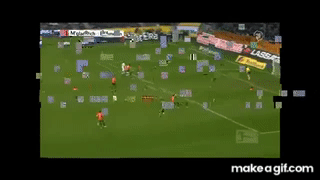Physiocrat
Has No Mates
- Joined
- Jun 29, 2010
- Messages
- 9,568
Pat
Gio

Pat Tactics
Formation: 4-2-3-1
Gio Tactics
ON THE BALL:
Gio

Pat Tactics
Formation: 4-2-3-1
- Recber's big move to Barca ended in dismal failure, but he enjoyed a distinguished 12 season career at Fener and was, briefly, seen as one of the best GKs in the world, finishing third in the IFHHS Goalkeeper of the Year rankings in 2002.
- The distinguished defensive organiser Vasovic led Partizan Belgrade all the way to a European Cup final in 1966, even scoring in a narrow loss to Real Madrid. Carlos Mozer, the athletic powerhouse who hit his imposing peak at Marseille, comes in to partner him.
- The athletic, technically sound Alex Sandro emerged as one of the most promising flank-dominators around at Porto, while on the other side Danny McGrain is a Celtic all-time XI shoo-in, with sports writer Hugh McIlvanney commenting, "Anybody who saw him at his best had the unmistakable impression of watching a great player, probably one who had no superior anywhere in the world."
- Wim Jansen and Marco Verratti form a feisty and tenacious midfield pivot, and Verratti's freakish press-resistance and stratospheric passing stats should ensure steady and punchy service to the attackers.
- A youthful Hernan Crespo, who fired River Plate to the 1996 Copa Libertadores with 10 goals in 13 matches, leads the line. Behind him, Bale, Edmundo and Reus possess an impressive range of abilities to unlock defences, and have freedom to interchange and overload as they wish in the attacking phase. This ability to create dangerous overloads was a notable feature of Reus' performances under Tuchel especially, and it will be an important way of discomfiting Gio's excellent FBs.

- Edmundo's signing was a catalyst for Palmeiras to win two successive Brazilian championships after 17 trophyless seasons, while Bale hit an extraordinary individual level at Spurs, winning the PFA Player of the Year award twice in three seasons. At this point Reus has cemented himself as one of Dortmund's greatest players and is a personal favourite of mine - a match-winner with excellent end product, but also a grafter and team player.
Gio Tactics
ON THE BALL:
- Classic 4-3-3 with a false 9. Several classy technicians in central midfield and wide areas. The Benfica legends partnership of Mario Coluna and Rui Costa should hit it off.
- Litmanen should particularly enjoy the freedom to drop into the hole and then burst forwards.
- Various routes to goal - two wide forwards/wingers who can stretch the play and go direct for goal, both cutting onto their stronger foot; central midfielders who can probe, cut open and threaten from range; dynamic overlapping full-backs from the top shelf in this pool.
- Compact positional play with moderate line. A few thematic partnerships - the French full-backs in Amoros and Lizarazu; the crafty South American trio in Da Guia, Gamarra and Cordoba; the silky Scandinavian pair of Laudrup and Litmanen; and the Portuguese central midfield - should ensure players are in sync.



